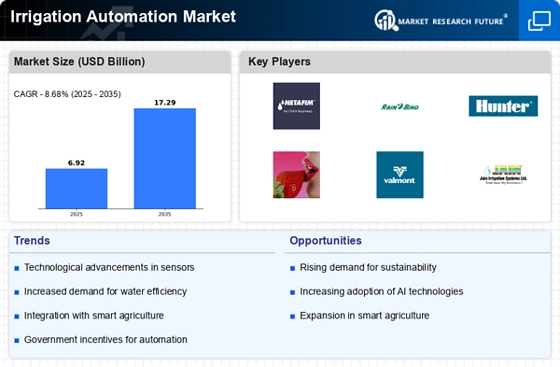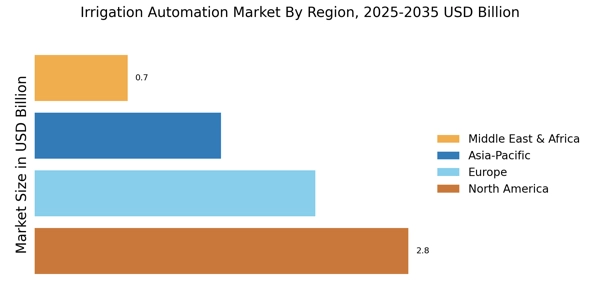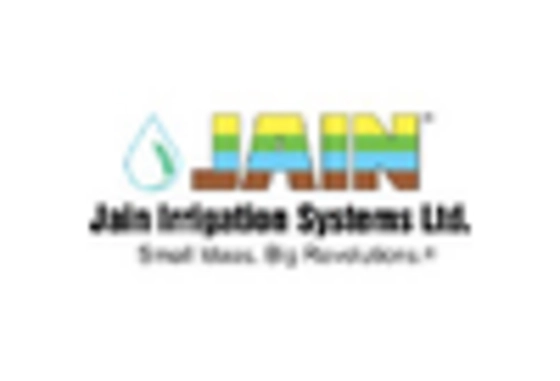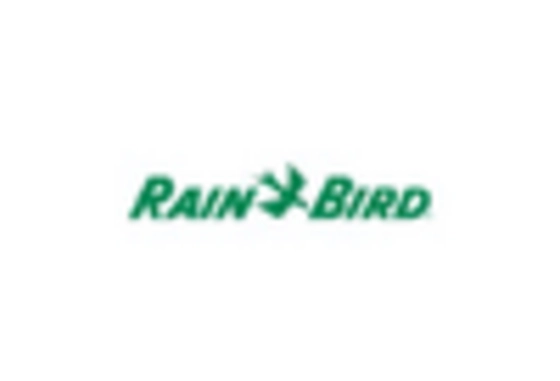The Irrigation Automation Market is currently characterized by a dynamic competitive landscape, driven by technological advancements and increasing demand for efficient water management solutions. Key players such as Netafim (IL), Rain Bird (US), and Jain Irrigation Systems (IN) are strategically positioned to leverage innovation and sustainability in their operations. Netafim (IL) focuses on precision irrigation technologies, while Rain Bird (US) emphasizes smart irrigation systems that integrate with IoT devices. Jain Irrigation Systems (IN) is expanding its portfolio to include advanced automation solutions, thereby enhancing its competitive edge. Collectively, these strategies foster a competitive environment that prioritizes efficiency and environmental stewardship.
In terms of business tactics, companies are increasingly localizing manufacturing to reduce costs and enhance supply chain resilience. The market appears moderately fragmented, with several players vying for market share. However, the influence of major companies is substantial, as they set industry standards and drive innovation. This competitive structure encourages smaller firms to adopt advanced technologies to remain relevant, thereby intensifying the overall competition.
In August 2025, Netafim (IL) announced a partnership with a leading agricultural technology firm to develop AI-driven irrigation solutions. This collaboration is poised to enhance precision agriculture practices, allowing farmers to optimize water usage based on real-time data. The strategic importance of this move lies in its potential to position Netafim as a leader in the integration of AI within irrigation systems, thereby attracting a broader customer base.
In September 2025, Rain Bird (US) launched a new line of smart controllers that utilize machine learning algorithms to adapt irrigation schedules based on weather forecasts and soil moisture levels. This innovation not only enhances water conservation efforts but also aligns with the growing trend towards sustainable agricultural practices. The introduction of these smart controllers signifies Rain Bird's commitment to advancing technology in irrigation, which could significantly bolster its market position.
In July 2025, Jain Irrigation Systems (IN) expanded its operations in North America by acquiring a local irrigation technology firm. This acquisition is strategically significant as it allows Jain to tap into the North American market's growing demand for automated irrigation solutions. By enhancing its technological capabilities and market presence, Jain is likely to strengthen its competitive stance in a region that is increasingly prioritizing sustainable farming practices.
As of October 2025, the Irrigation Automation Market is witnessing trends that emphasize digitalization, sustainability, and the integration of artificial intelligence. Strategic alliances among key players are shaping the competitive landscape, fostering innovation and collaboration. The shift from price-based competition to a focus on technological advancement and supply chain reliability is evident. Moving forward, companies that prioritize innovation and sustainable practices are likely to differentiate themselves in an increasingly competitive market.


















Leave a Comment